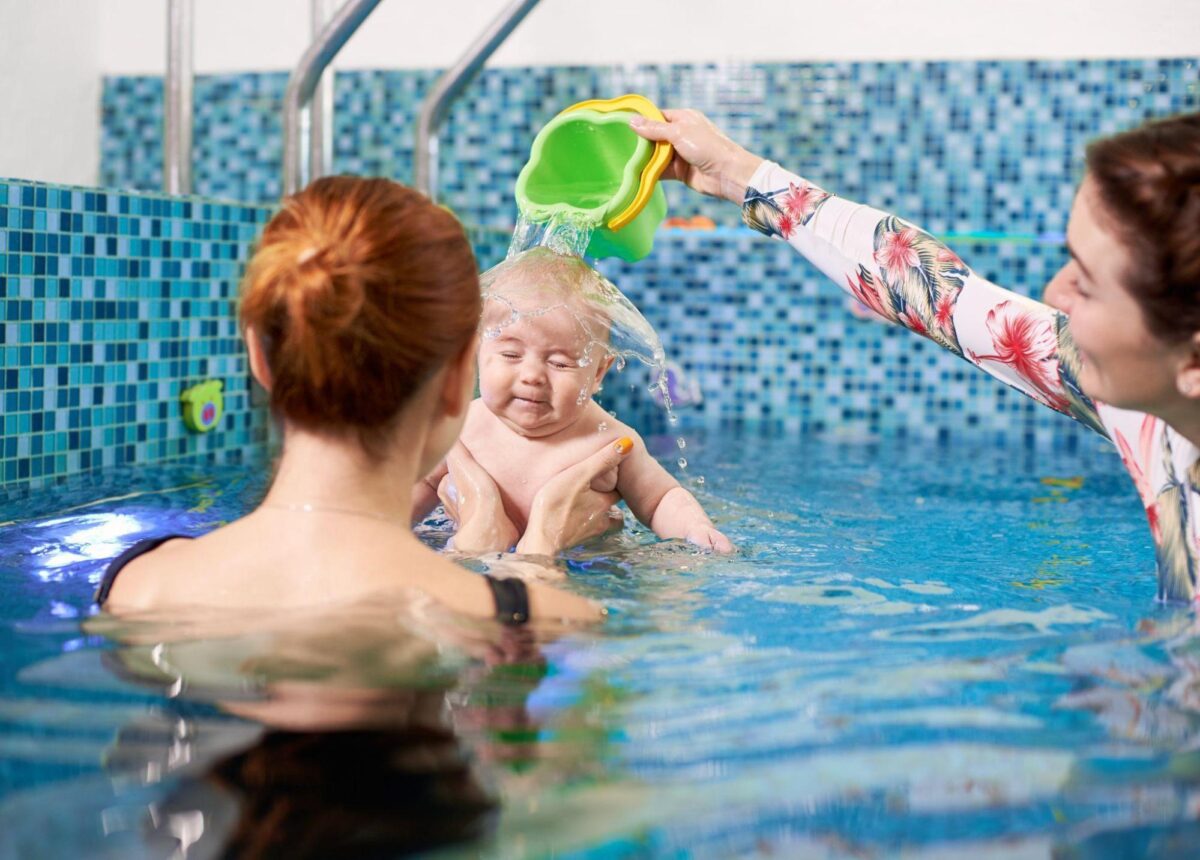Breath Control in Swimming: 9 Techniques to Boost Stamina and Endurance

by Coach Mark
Mastering breath control is one of the most valuable skills in swimming, enabling both children and adults to enhance their endurance and overall comfort in the water. Whether you’re training for competitive performance or simply enjoying swimming as a leisure activity, learning to control your breath can transform your experience.
To achieve this, swimming lessons incorporate a range of targeted breath-control techniques that build confidence and improve breathing efficiency. For instance, bobbing progression drills gradually strengthen lung capacity and comfort underwater, while maintaining proper body alignment helps conserve energy and reduce unnecessary strain.
However, it’s important to note that these breath-control techniques should never be practiced alone; always ensure a trained swimming instructor is present to assist if anything goes wrong.
What is Breath Control and Why is It Important in Swimming?
Breath control in swimming is about how you regulate your breath, managing when to inhale, exhale, and maintain rhythm while moving through the water. It goes beyond simply taking in air; it’s about synchronizing breathing patterns with each stroke so that your body and movements remain in harmony.
When done correctly, breath control allows you to glide more smoothly, conserve energy, and maintain proper rhythm throughout your swim. Moreover, by learning to manage oxygen intake and exhalation underwater, you can reduce fatigue and remain relaxed even during longer or more intense sessions.
Ways to Improve Breath Control in Swimming
1. Practice Bobbing Progression Drills
The bobbing progression drill is one of the most effective techniques for building your breath-controlling capacity safely and gradually. This swimming exercise begins with submerging underwater, exhaling slowly, and then resurfacing for a quick, controlled inhalation before repeating the cycle.
This rhythmic pattern not only trains the lungs to manage oxygen more efficiently but also helps swimmers become comfortable with the natural flow of breathing in water. As confidence grows, the drills can be advanced by increasing the number of bobs, extending the duration of submersion, or incorporating movement across the pool.
2. Maintain Proper Body Alignment
Proper body alignment is a key factor in achieving effective breath control in swimming. A streamlined position reduces drag, allowing swimmers to move through the water with less resistance. By keeping the head, hips, and legs aligned, swimmers can maintain balance and stability, which in turn makes it easier to coordinate breathing with each stroke.
When the body is positioned correctly, there is less strain on the muscles, enabling smoother movements and conserving valuable energy for longer swims. Moreover, good posture helps swimmers stay relaxed, preventing unnecessary tension that can disrupt breathing rhythm.
3. Practice Bilateral Breathing
Bilateral breathing is the practice of alternating breaths between both sides during a swim, and it plays a vital role in building balance, rhythm, and endurance. Instead of always turning to the same side, swimmers learn to distribute their breathing evenly, which helps maintain symmetry in their strokes and prevents over-reliance on one side.
This balanced approach reduces muscle strain and facilitates smoother body rotation, resulting in greater efficiency in the water. Furthermore, bilateral breathing allows swimmers to adapt more easily to different conditions, such as waves, currents, or competitors swimming alongside them.
4. Focus on Deep Exhales
The deep exhale technique is essential for maintaining steady breathing during swimming, as it ensures the lungs are fully cleared before taking in fresh air. Instead of holding stale air, swimmers are encouraged to exhale wholly and slowly while submerged, releasing bubbles in a controlled manner.
This prevents the feeling of breathlessness and prepares the lungs to take in a deeper, more efficient inhalation at the surface. Additionally, exhaling fully helps regulate buoyancy, allowing the body to remain balanced and relaxed in the water.
5. Use Diaphragmatic Breathing
Diaphragmatic breathing, also known as belly breathing, is a powerful technique that strengthens the lungs and promotes calm, controlled breathing. This swimming method engages the diaphragm, allowing swimmers to draw in more oxygen with each breath while reducing unnecessary tension in the upper body.
Practicing on land by placing a hand on the stomach and feeling it rise with each inhale helps swimmers become familiar with the movement before transferring it to the pool. Once in the water, focusing on diaphragmatic breathing makes it easier to sustain longer swims with less fatigue.
6. Try Breathing Variation Drills
Breathing variation drills are designed to push swimmers beyond their usual comfort zones by adjusting when and how often they take a breath while swimming. For example, extending the number of strokes between breaths or alternating the side on which you inhale challenges the body to use oxygen more efficiently while staying calm under pressure.
These variations improve lung capacity and train swimmers to adapt to different conditions, such as fatigue during long swims or external factors like waves and currents. Additionally, practicing multiple breathing patterns enhances mental flexibility, making it easier to switch strategies mid-swim without disrupting one’s rhythm.
7. Train with a Snorkel
Using a snorkel during swimming practice offers a valuable way to refine technique while maintaining steady, uninterrupted breathing. By eliminating the need to turn their head for air, swimmers can focus fully on maintaining their body position and stroke mechanics. This consistent airflow reduces stress on the lungs, enabling swimmers to practice for longer periods without disrupting their rhythm.
8. Increase Distance Gradually
Progressively extending swim distances is one of the most reliable ways to strengthen breath control and build endurance in the water. By beginning with manageable laps and gradually increasing the length, swimmers allow their bodies to adapt to longer stretches of controlled breathing without creating unnecessary strain.
This step-by-step progression not only develops lung capacity but also instills confidence, making each new swimming milestone feel both achievable and rewarding. Moreover, maintaining a steady breathing rhythm during these extended swims helps prevent early fatigue while reinforcing proper stroke efficiency.
9. Strengthen Lungs with Respirators
Incorporating a respiratory trainer or respirator into dry-land workouts is an excellent way to strengthen the muscles involved in breathing, ultimately enhancing control and endurance in swimming.
These devices create resistance while inhaling or exhaling, forcing the lungs and diaphragm to work harder and gradually increasing overall respiratory capacity. As a result, swimmers develop greater stamina and find it easier to manage oxygen more efficiently during challenging sets or longer swimming sessions.
Mastering Breath Control in Swimming with Marsden Swim School

By steadily working on breath-control techniques, you can gradually build confidence and endurance in the water. Yet, having an experienced swimming instructor makes the journey not only safer but also far more effective by providing expert guidance on breathing techniques.
At Marsden Swim School, we offer structured swimming lessons for kids and adults, ensuring that every swimmer learns at their own pace while developing the essential skills for long-term success. Our classes focus on technique and safety, while also building strong foundations in breath control and water efficiency.
If you’re ready to take your basic swimming skills to the next level or want to enroll your child in our swimming courses in Singapore, contact us today!

